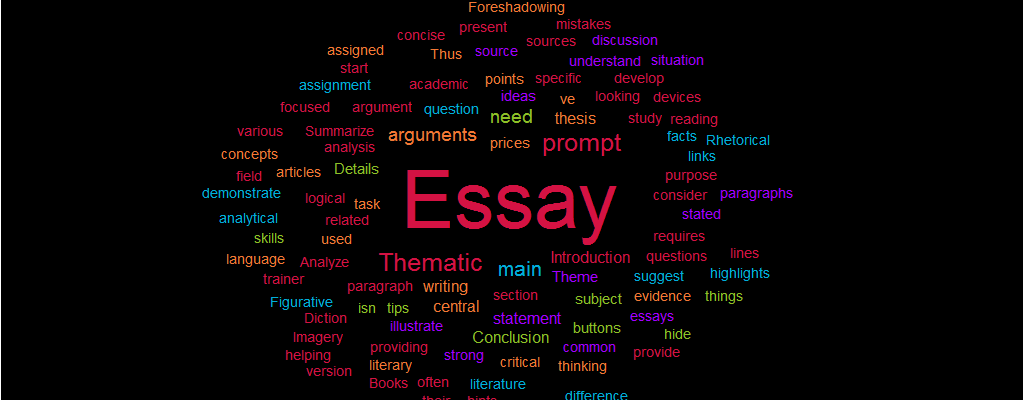How to Write a Thematic Essay
Publication Date:

So, you’ve got a thematic essay assigned, and the only thing you have is your prompt. Once you’ve read your prompt, you may get more questions about this task, so let’s start from the first and the most important question.
What Is a Thematic Essay?
The thematic essay is an academic assignment that requires you to answer a certain question stated in your prompt. It may be also focused on the analysis of a certain argument. You need to consider various specific concepts related to your field of study. The main purpose of such a paper is to demonstrate your critical thinking and analytical skills so you will need to provide logical links between different ideas and facts. Here are a few things that your trainer will consider important when reading your paper:
- Details;
- Foreshadowing;
- Figurative language;
- Diction;
- Rhetorical devices;
- Imagery;
All these literary devices are used as evidence in essay writing, helping you develop a central idea.
How to Find a Central Theme
It’s often hard to understand what the central theme of your essay is, without looking at the prompt. However, we have some tips that may help you in any situation.
- Summarize the used literature. Books and articles usually hide many hints on what their central idea is.
- Select the main subject of the discussion. There is a difference between your central theme and a subject. Usually, the main theme is a narrowed version of the subject that highlights its specific details.
- Read between the lines. To get more examples and ideas related to your sources, get deep into every source and think what can be useful for the question from your prompt.
Analyze Your Prompt
The most challenging part of writing isn’t writing itself, but your need to interpret the prompt and to understand what you’ve been asked to do. We suggest re-reading your prompt a few times to determine what your main task is. It may be:
- Description — you have to illustrate the topic of the essay, focusing on details;
- Explanation — you must explain ideas of the essay in a plain, logical way, providing links between reasons and causes;
- Discussion — you have to use logic, facts, arguments, and statistics to discuss certain details of the concept;
- Showing — highlight the author’s main point by providing evidence from the source.
Write Your Introduction
In general, thematic essays require you to write an outline of main points. Thus, your introduction must serve this purpose as well. Some kinds of academic essays imply highlighting more points than others. Thus, sometimes you may need to present more primary sources. You will also need to prepare several supporting arguments for your essay.
In order for you not to get lost, we suggest noting key arguments while writing the first draft. Once you’ve prepared a list of your main points, you need to develop a strong thesis statement. Here comes another problem: the thesis statement must be concise, but this essay type requires you to describe several points. In this case, you can just check your prompt once again and decide what idea is the most important for your essay.
Write a Body and a Conclusion
The body of the essay must include at least three arguments that support your thesis statement. The most common essay structure implies writing five paragraphs, so you need one paragraph of the introduction, three body paragraphs, and another paragraph of the conclusion. Each body paragraph focuses on a particular argument and describes it in detail. To make your arguments stronger, we suggest using quotes. To do it properly, familiarize yourself with a required citation format.
Given that your main goal is to respond to a certain question, write your answer at the end so that the whole essay will illustrate how you came to such a conclusion. The last section of your essay must also summarize your arguments and remind your audience the thesis statement. Make sure you don’t just repeat your thesis statement from the introduction word-for-word. Instead, you can emphasize something important from the body section. A good way to write a conclusion is to present the idea of your essay in a broader context, in order to point out its significance.
After this, read your essay and make sure your ideas are clear and concise. Your essay must analyze the subject, summarizing basic arguments and addressing questions stated in the prompt. The introduction and the conclusion must be strong and interesting for readers.
There are some common mistakes that may prevent you from getting an A. Among the most popular mistakes, there are the lack of accuracy in the analysis, weak introductions and conclusions, evaluation that isn’t supported by any evidence, and improper citing.